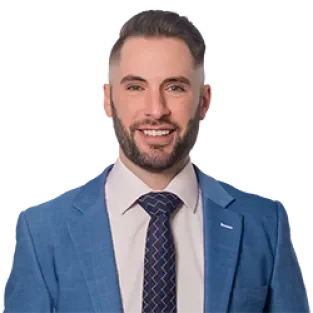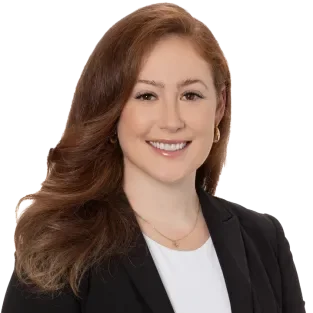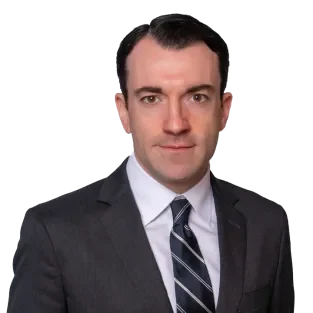ASAP
Presidential Order Aims to Bring Stability to Intercollegiate Sports
At a Glance
- New executive order includes several policy statements and directives regarding payments to college athletes and related issues.
- Among other things, the EO asks agencies to clarify student athlete status through federal rule-making, and appears to outlaw pay-for-play payments to college athletes from third parties other than “fair market” payments such as through brand endorsements.
- Bipartisan legislation pending in Congress would achieve many of the same ends.
On July 24, President Trump issued an executive order (EO) entitled, “Saving College Sports.” The order includes several policy statements and directives with the stated purpose being to provide for the fair treatment of college athletes, including students who participate in women’s and Olympic sports, while allowing the schools and conferences to maintain reasonable rules without the threat of continued litigation.
The EO follows years of litigation challenging various NCAA rules that, among other things, restricted the ability of college athletes to earn compensation beyond the scholarships and other financial aid provided by their schools to support their “cost of attendance.” The NCAA relaxed those rules in 2022 in response to court challenges and various state laws, by allowing students to earn compensation for their “name, image and likeness” (NIL) from bona fide fair market value agreements with third parties. But the NCAA continued to prohibit direct payments to student athletes from the schools themselves as well as from “pay-for-play” transactions from alumni “collectives” that seek to recruit students to play for their schools’ teams.
That changed with the recently approved House Settlement Agreement in California, which resolved several antitrust claims that, most significantly, challenged the NCAA’s restrictions on direct payments between the schools and the students, including the claim that the major Division 1 conferences should be allowed to share the media revenue generated by sports like football and basketball directly with the students who play them.
The House Settlement provides for a $2.8 billion settlement fund to compensate student athletes for past damages allegedly caused by the NCAA’s NIL restrictions (which will primarily be paid to football and basketball players), as well as a 10-year injunctive relief settlement that will allow the colleges and universities that “opt in” to the settlement to pay their student athletes directly up to a certain maximum cap tied to a percentage of the media revenues of the major conferences. The settlement also restricts the ability of school collectives to provide “pay-for-play” payments to the athletes, and includes other provisions regarding the administration of the agreement.
Despite the House Settlement, not all challenges faced by college sports have been resolved. Significant disputes remain, including through lawsuits seemingly filed daily, over how intercollegiate sports are and should be regulated. That includes objections and appeals to the House Settlement itself, continued challenges to the NCAA’s transfer and eligibility rules, questions about whether student-athletes are “employees” under state and federal laws, and significant questions over the ability of “collectives” to recruit players through what appear as “pay-for-play” endorsement deals.
The EO addresses some of these outstanding issues and brings greater stability to college sports, but does not impose any immediate legal obligations on colleges and universities. Rather, it simply announces policy expectations for the executive agencies to implement where possible. It may also be intended to encourage Congress to enact legislation giving these policies the force of law.
The most notable provisions of the EO include:
- A directive to the secretary of Labor and the National Labor Relations Board (NLRB) to “clarify” the status of student-athletes to “maximize the educational benefits and opportunities provided by higher education institutions through athletics.” While not clear, it also may have been intended to avoid treatment of student-athletes as “employees” under federal law. Under the prior administration, the NLRB general counsel issued guidance and support in several cases (involving basketball players at Dartmouth and football and basketball players at the University of Southern California) that sought to reclassify Division 1 student athletes as “employees” under the National Labor Relations Act. The full NLRB never had the opportunity to rule in those cases as they were withdrawn following the 2024 presidential election. And, on February 14, 2025, NLRB Acting General Counsel William Cowen rescinded the previous NLRB general counsel’s position that student-athletes should be classified as employees.
- A statement that opportunities, scholarships, and competition in women’s and non-revenue sports must be preserved, and ideally, expanded, and recommendations for athletic departments to provide scholarship opportunities and roster spots for non-revenue sports. In that regard, the EO states that revenue-sharing between colleges and college athletes should be carried out in a manner that preserves or expands athletic scholarships and opportunities in women’s and non-revenue sports.
- The EO seemingly prohibits pay-for-play payments to college athletes from third parties other than “fair market” payments such as through brand endorsements—i.e., no “pay-for-play” inducements from “collectives.” This part of the EO may conflict with the laws of several states that have recently been enacted prohibiting restrictions on NIL payments to student athletes. The EO apparently recognizes that potential conflict by directing that, within 30 days (by August 23), the secretary of Education, in consultation with the attorney general, the secretary of Health and Human Services, the secretary of Education, and the chair of the Federal Trade Commission, develop a plan to advance these policies by working with Congress and state governments as appropriate.
- The EO also directs the attorney general and chair of the Federal Trade Commission to (i) review, and as necessary revise, litigation positions, guidelines, policies, or other actions; and (ii) develop a plan to implement appropriate future litigation positions, guidelines, policies, or other actions within 60 days. The administration’s stated concern is protecting “the rights and interests of student-athletes” and the availability of athletic scholarships when they are “unreasonably challenged under antitrust or other legal theories.”
- The EO contains a statement intended to protect the development of the United States Olympic and Paralympic teams by safeguarding the role that college athletics plays in developing athletes to represent the United States.
The EO was issued while there is pending legislation in Congress that seeks to address these same issues. On July 10, seven Republicans and two Democrats introduced the Student Compensation and Opportunity through Rights and Endorsements (SCORE) Act (H.R. 4312) in the House of Representatives.
The SCORE Act would:
- Allow student-athletes to continue to enter into NIL agreements and hire agents.
- Prohibit pay-for-play and predatory compensation schemes.
- Require institutions to provide access to academic and career counseling, as well as mental health services.
- Provide coverage of medical expenses for athletic injuries for three years after graduation.
- Protect scholarships regardless of injury.
- Provide that student-athletes are not to be considered “employees” under any federal or state law – a key point from an employment law perspective that would bring clarity and finality to the issue.
While the EO does not require or mandate any action by higher education institutions, and it is far from clear yet whether the SCORE Act or similar legislation will advance to passage, the administration’s attention to intercollegiate athletics merits close monitoring in the months to come.











